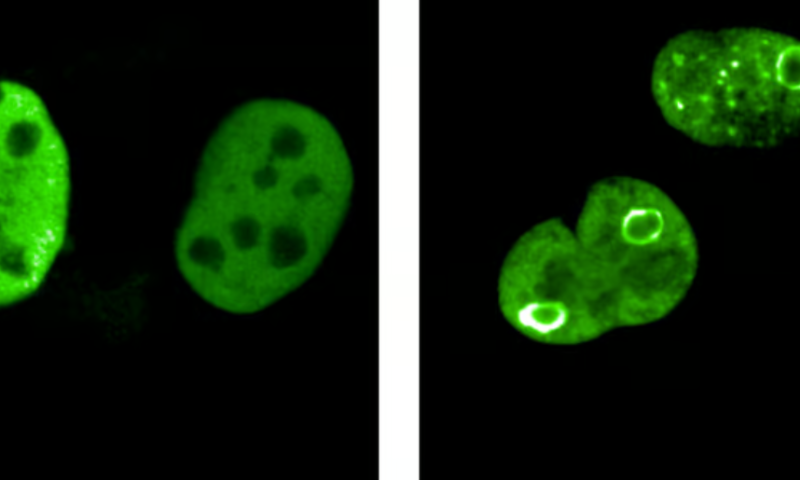The protein produced by the MYC oncogene is a well-known foe in the oncology world. Its presence is associated with treatment-resistant cancer cells, which grow uncontrollably and evade the immune system, and it was once thought to be “undruggable”.
Now, scientists have discovered a new mechanism that furthers the understanding of how MYC helps cancer cells survive. In the results of a study published Nov. 23 in Nature, researchers from Germany’s University of Würzburg described how they learned that MYC proteins come together to form spheres around vulnerable parts of a cancer cell’s genome. Destroying these spheres kills the cancer cells.
“These observations revolutionize our understanding of why MYC proteins are so crucial for the growth of tumor cells,” Martin Eilers, Ph.D., co-corresponding author, said in a press release.
Prior to the study, the scientists knew that MYC proteins played a variety of roles in cancer growth and survival, but it wasn’t clear how they were involved in so many processes. To investigate, they started by staining cancer cells and healthy cells with fluorescent proteins to track their distribution. In both cases, they observed that the nuclei of the cells contained MYC proteins—but that in cancer cells, they formed spheres around the cancer cells’ genomes.
A series of assays on healthy cells helped explain what was going on. They showed that when the cells were exposed to stressful conditions that mimicked the proliferation of fast-growing tumor cells, the MYC proteins rearranged into spheres surrounding specific sites called replication forks along the cell’s DNA. Without the shield of MYC proteins to protect them, the DNA would be at risk of degradation due to a collision between two kinds of enzymes, one that transcribes DNA to RNA and another that duplicates DNA.
The scientists replicated their findings in cancer cells, then tested what would happen if the spheres couldn’t form. When cells without MYC were stressed, the spheres didn’t form and the enzymes collided, causing breaks in the cells’ DNA and ultimately killed them.
In light of the findings, Eilers and his colleague Elmar Wolf, Ph.D., another lead investigator on the study, have formed a company that will look for drugs that block the MYC protein’s function. They already have investments from partners in the pharmaceutical industry, according to the university.
In cancer cells, the MYC protein is difficult to target directly because it doesn’t have a fixed structure, making it hard to create agents that can recognize it. That hasn’t stopped other researchers from trying, however. Peptomyc, a Spanish biotech company specializing in MYC-targeting therapies, in October became the first to successfully complete a phase 1 trial for an MYC inhibitor. Its drug, Omomyc—which started out as a research tool—prevents the MYC protein from binding to the promoter regions of genes that would stimulate self-renewal and growth of cancer cells. Peptomyc is currently conducting a phase 1/2 study on the drug.

